| Author |
 Replies: 65 / Views: 2,005 Replies: 65 / Views: 2,005 |
|
|
|
Pillar Of The Community
Israel
3579 Posts |
|
|
Fossils of Libya, issued by Libya on November 26, 1996 - Mene rhombea - fish fossil - Mesodon macrocephalus - fish fossil - Eryon arctiformis - crab fossil (misspelled Eyron) 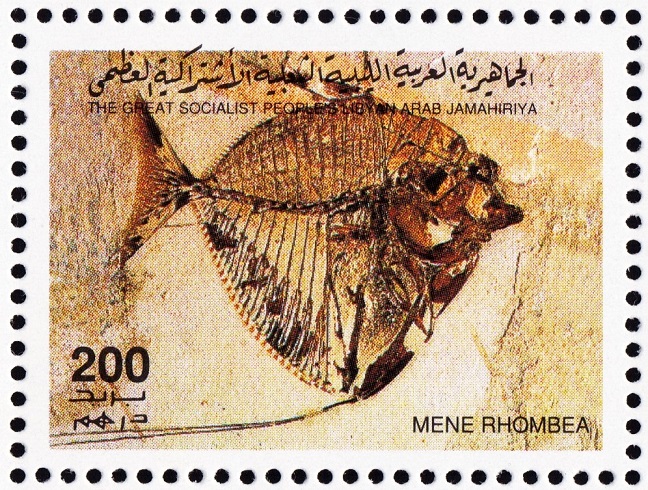 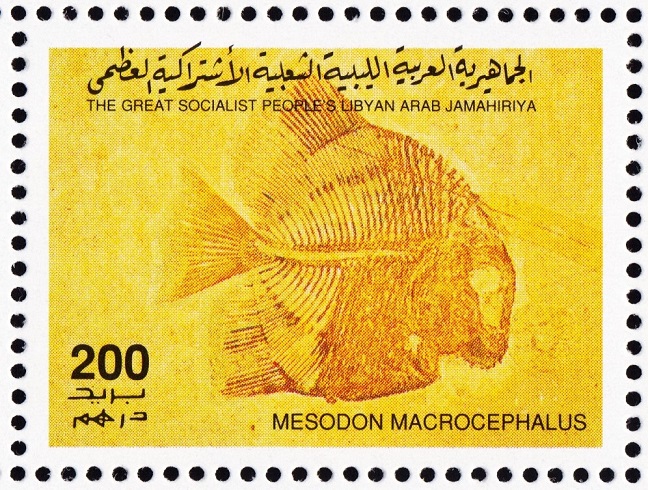 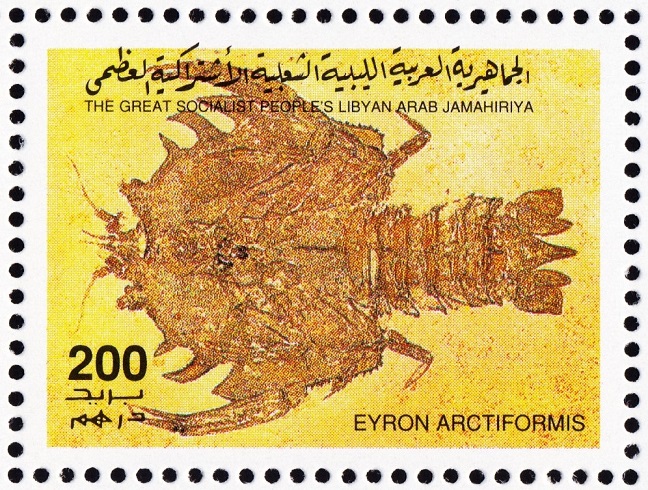 Issued in SS with the complete set including three prehistoric animal stamps 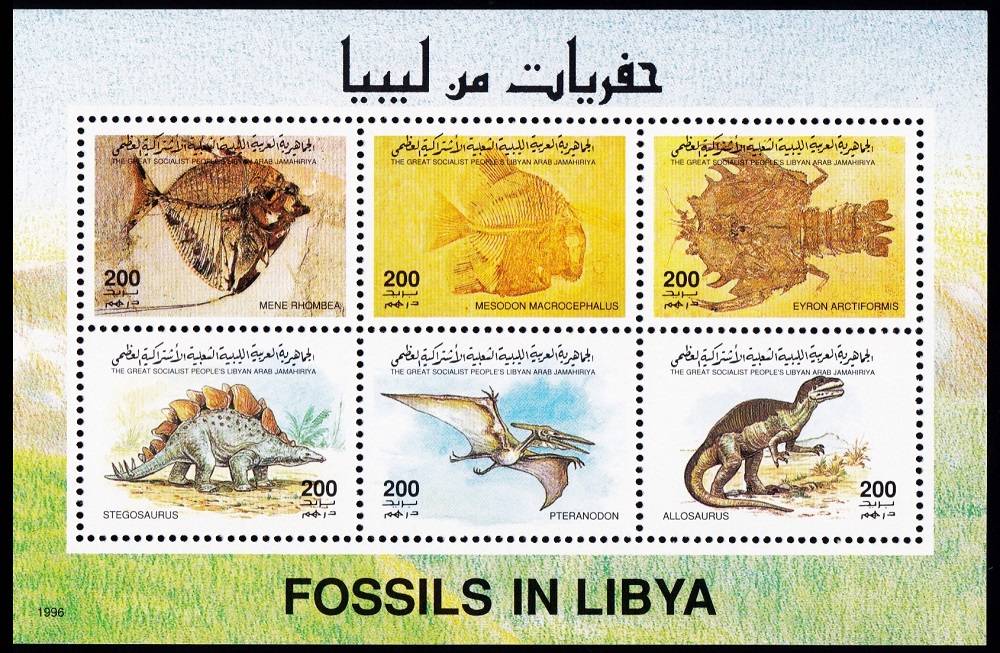 |
Send note to Staff 
|
|
|
Pillar Of The Community
Israel
3579 Posts |
|
|
Here is one of the first sets in the world shows fossils, designed by Wu Jiankun, engraved by Kong Shaohui and issued by the PR of China on April 15, 1958. All fossils were discovered in China and exhibited in Chinese museums. Fossil and reconstruction of Trilobite of Haoli Mountain (Kaolishania pustulosa): 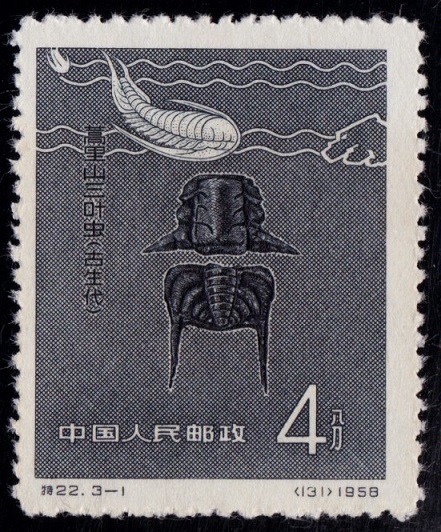 Fossil and reconstruction of dinosaur of Lu Feng (Lufengosaurus huenei). The first dinosaur stamp issued in the world. 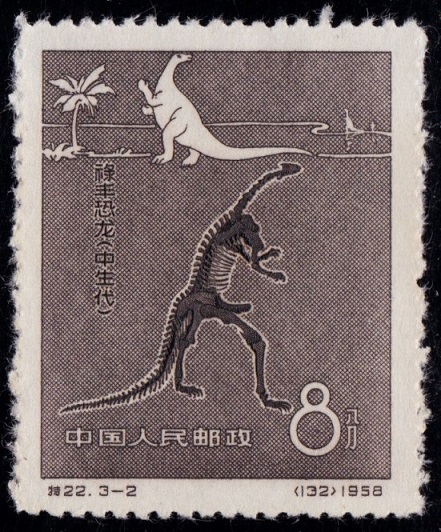 Fossil and reconstruction of Chinese Great Dear (Sinomegaceros pachosteus): 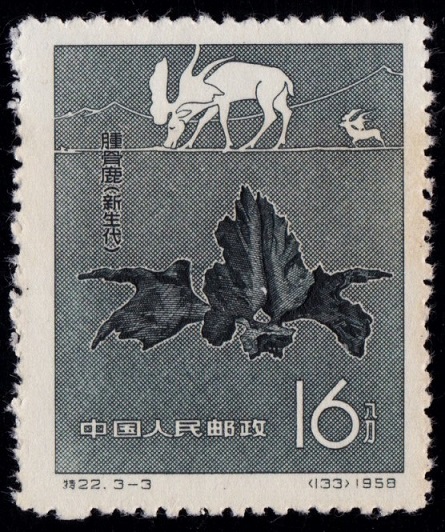 |
Send note to Staff 
|
|
|
Pillar Of The Community
Israel
3579 Posts |
|
|
Fossils, self adhesive stamps designed by Jenny Burman, engraved by Lars Sjooblom and issued by Sweden on January 27, 2011 - Murchisonia, Mollusk fossil - Ophioceras, Ammonite fossil  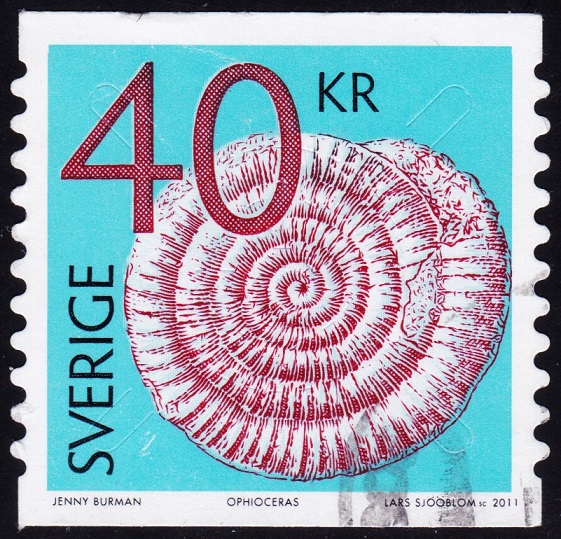 |
Send note to Staff 
|
|
|
Pillar Of The Community
Israel
3579 Posts |
|
|
Pillar Of The Community
Israel
3579 Posts |
|
|
Quote:
Ammonites had a coiled, external shell, similar to modern nautiluses, which they used for buoyancy. As I have written in my previous post, Ammonites are look similar to modern Nautilus, but still different groups within the class Cephalopoda. Ammonites Belong to the subclass Ammonoidea, which is now extinct and Nautiluses belong to the subclass Nautiloidea, which includes living species like the chambered nautilus. Both ammonites and nautiluses are closely associated due to their external shells and chambered structures, but they diverged early in cephalopod evolution. Ammonites are more closely related to modern squids, octopuses, and cuttlefish than to nautiluses. Here are stamps show Palau's Chambered Nautilus (Nautilus belauensis), issued by Palau on December 23, 1988: 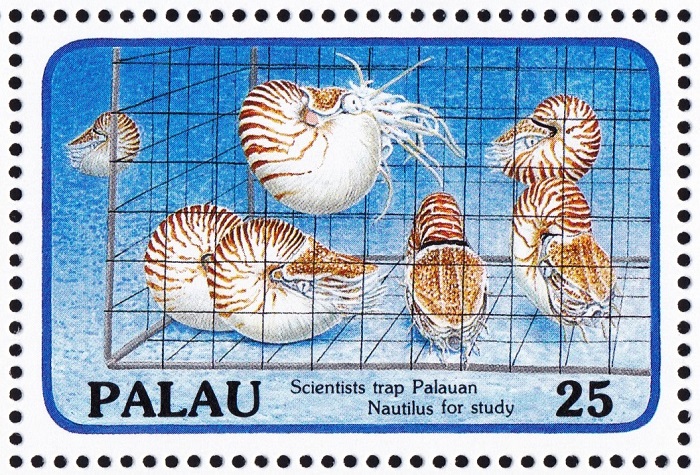 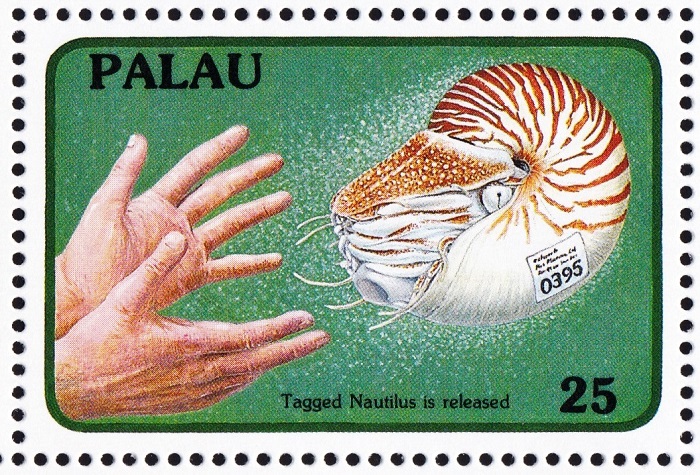 The following stamp from the set depicting a comparison between shells of modern Nautilus and extinct Ammonite: 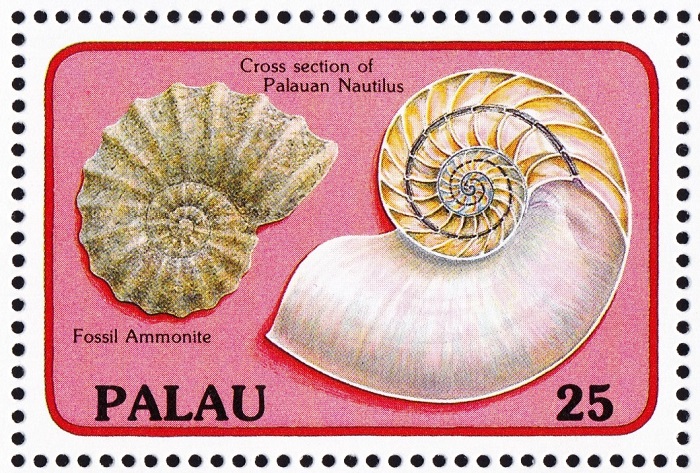 All issued in a set of five stamps in a souvenir sheet: 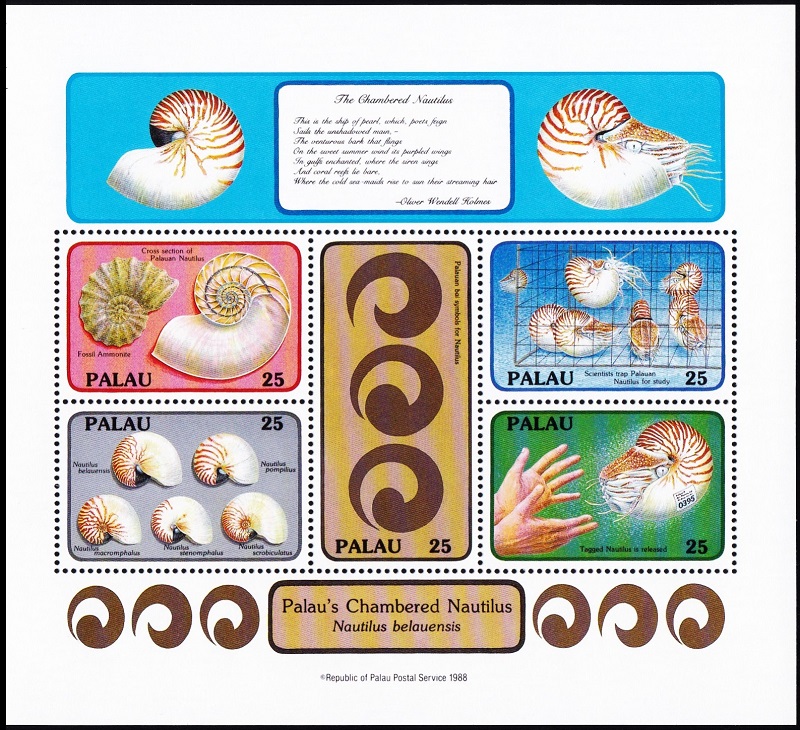 |
Send note to Staff 
|
| Edited by LaoPhil - 01/11/2025 01:36 am |
|
|
Pillar Of The Community
Israel
3579 Posts |
|
|
Pillar Of The Community
Israel
3579 Posts |
|
|
The 200th anniversary of the Budapest Natural History Museum, issued by Hungary on May 9, 2002. The margin shows Ammonite fossil, scallop, dinosaur's skeleton and stone tool: 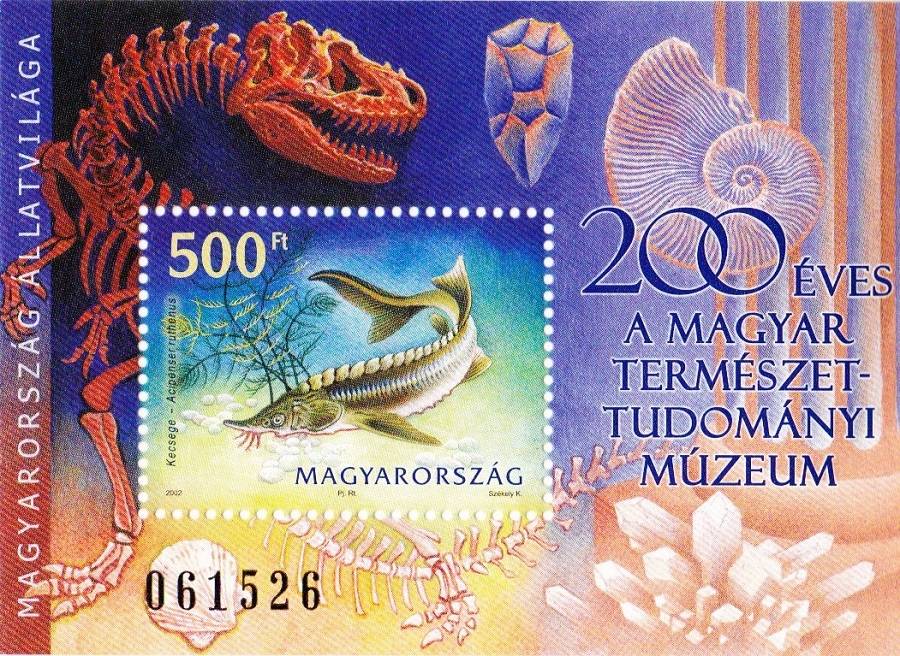 The stamp shows sterlet fish (Acipenser ruthenus) lives in Eurasia in freshwater rivers: 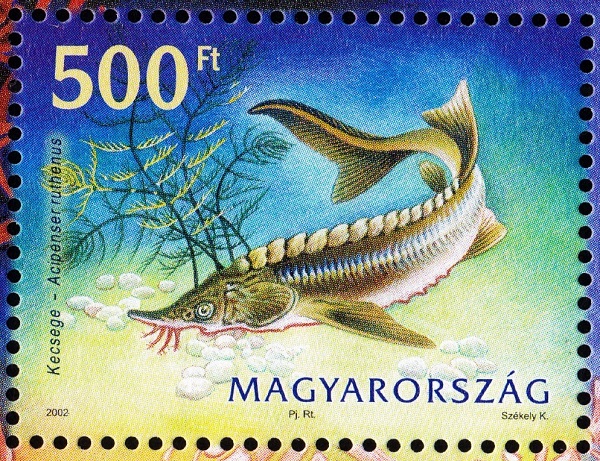 |
Send note to Staff 
|
| Edited by LaoPhil - 01/13/2025 1:15 pm |
|
|
Pillar Of The Community
Israel
3579 Posts |
|
|
Pillar Of The Community
Israel
3579 Posts |
|
|
Fossils, issued by North Korea on May 20, 2004: - Crab fossil (Calcinoplax antiqua) - Conifer leaves fossil (Podozamites lanceolatus) - Plant fossil (Comptonia neumannii) - Shell fossil (Clinocardium asagaiense) 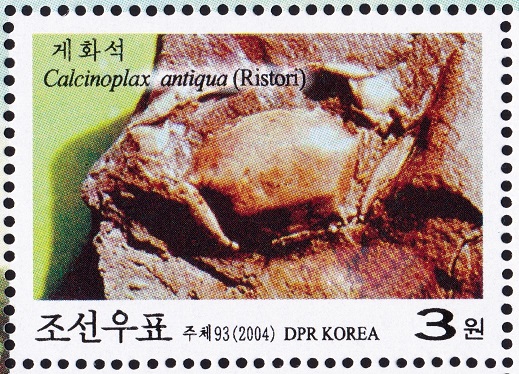 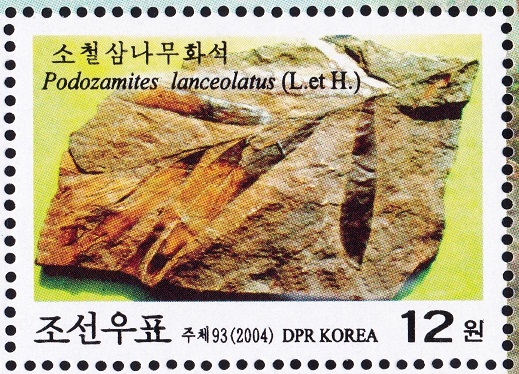 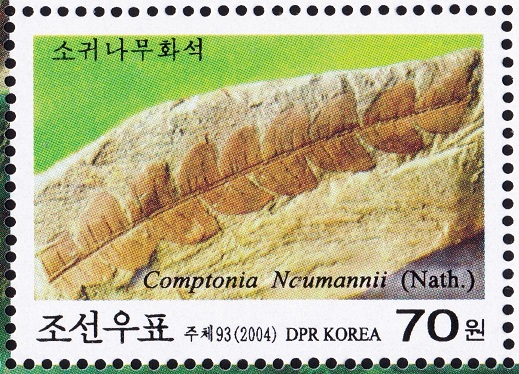 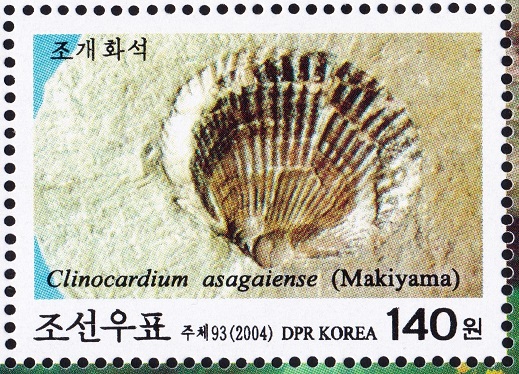 Issued in a mini sheet: 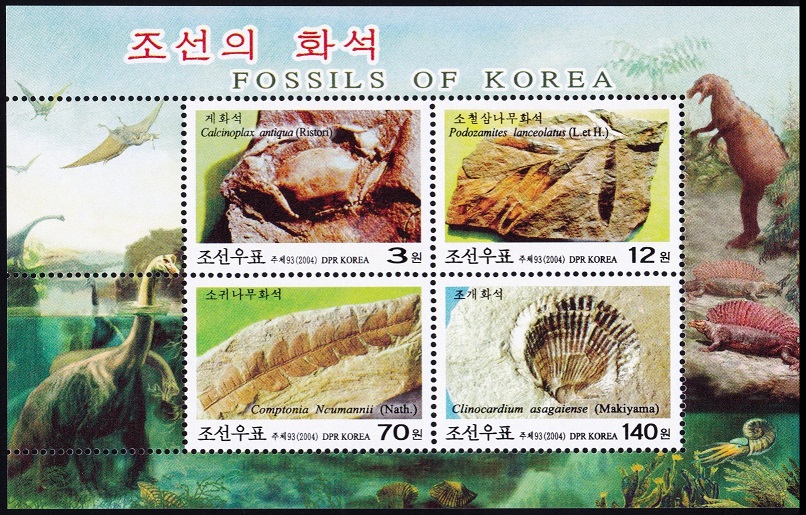 - Fern fossil (Tingia carbonica) 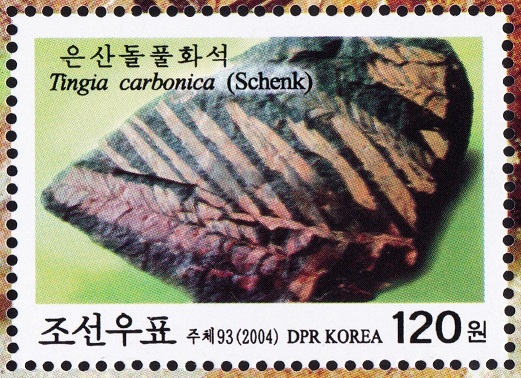 Issued in SS: 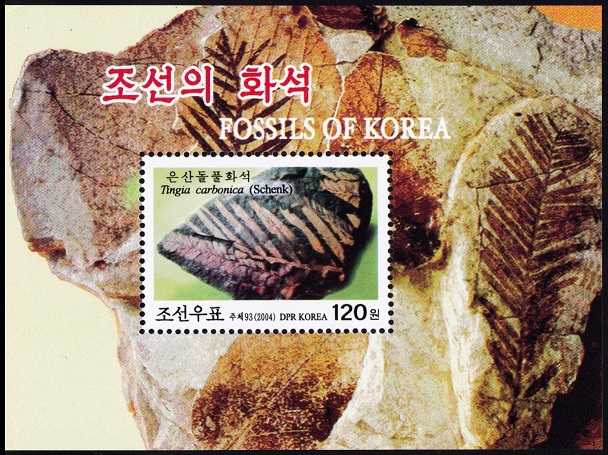 |
Send note to Staff 
|
| Edited by LaoPhil - 01/14/2025 11:13 pm |
|
|
Pillar Of The Community
Israel
3579 Posts |
|
|
The 50th anniversary of the Argentine Antarctic Institute, issued by Argentina on April 21, 2001: 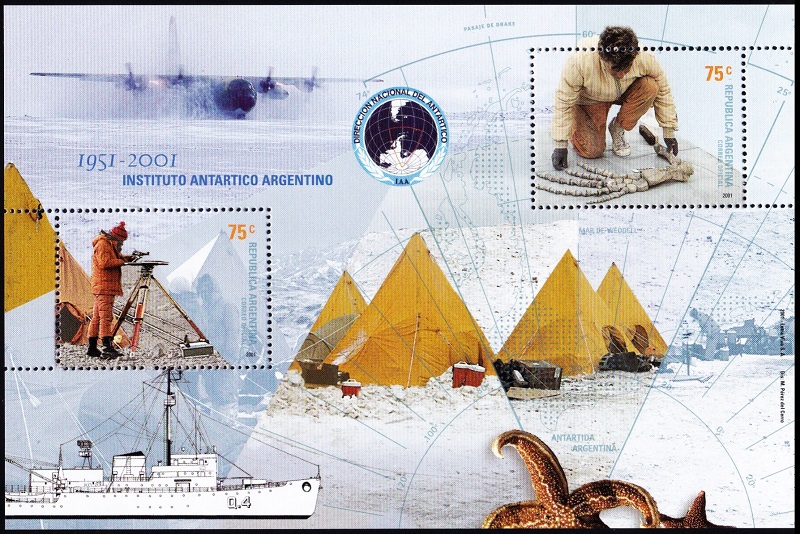 The upper right stamp shows paleontologist with fossilized Plesiosaur fin. The design is based on a real photo: 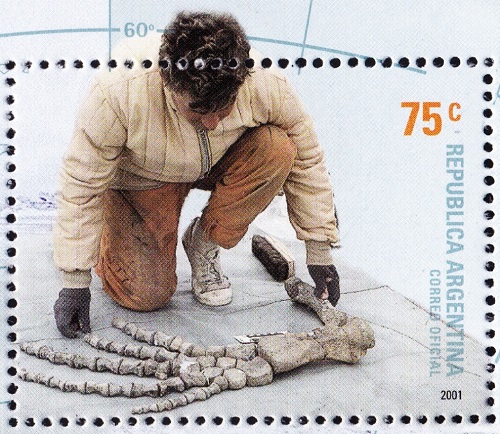 Plesiosaur, issued by Chile on May 15, 2000: 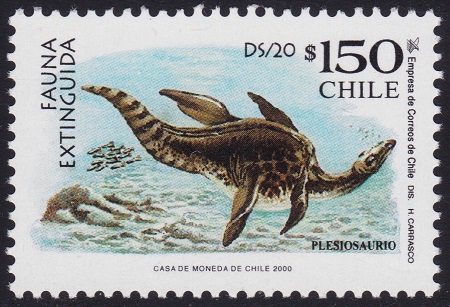 |
Send note to Staff 
|
|
|
Pillar Of The Community
Israel
3579 Posts |
|
|
"New Zealand involvement in Antarctica", a set of 4 stamps issued by NZ on February 1, 1984 to commemorate the 50th anniversary of the New Zealand Antarctic Society. Stamps were issued in a mini sheet too: I think the designer has no much imagination since all peoples on the stamps look the same: 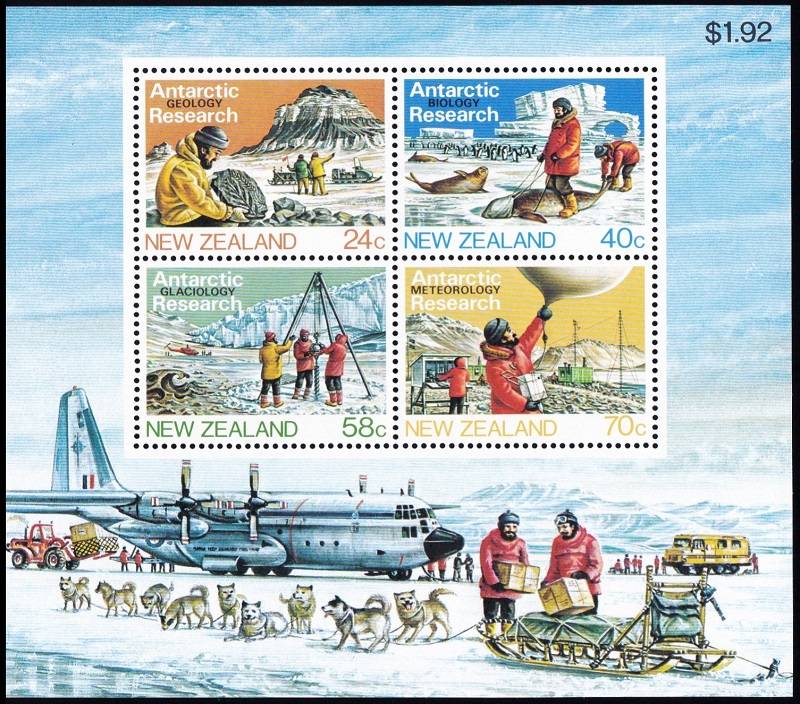 The 24C stamp shows NZ paleontologist holding plant fossil: 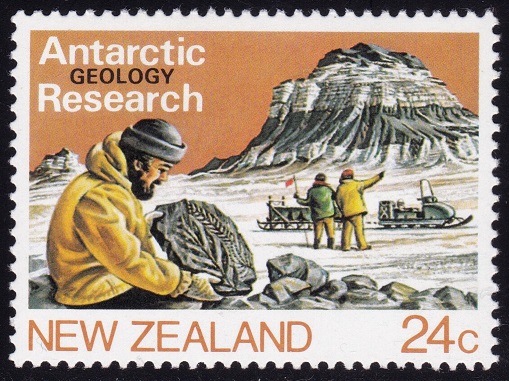 |
Send note to Staff 
|
|
|
Pillar Of The Community
Israel
3579 Posts |
|
|
Fossils, issued by Chad on December 27, 2001: - Stenosaurus Bollensis - Rhamphorynchus - Archaeopteryx lithographica - Keichosaurus hui 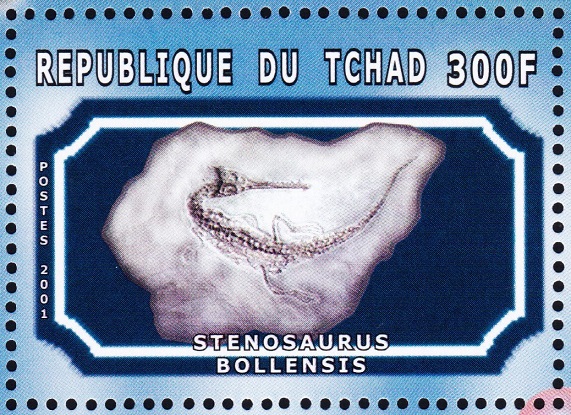 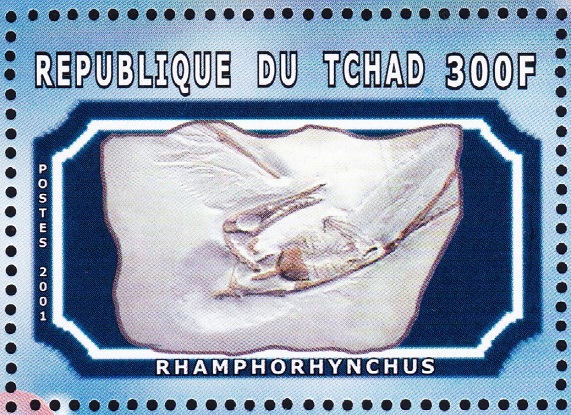 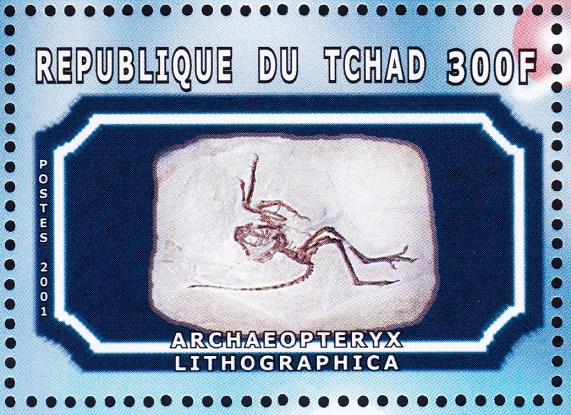 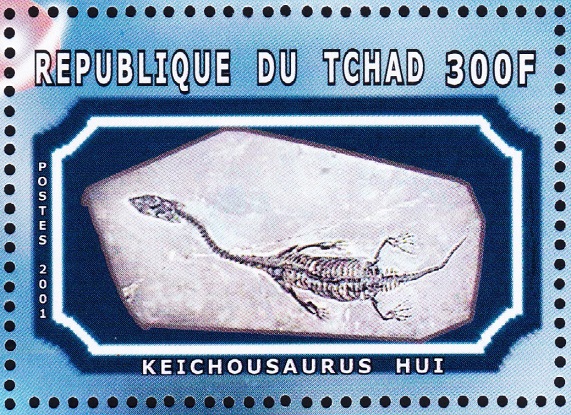 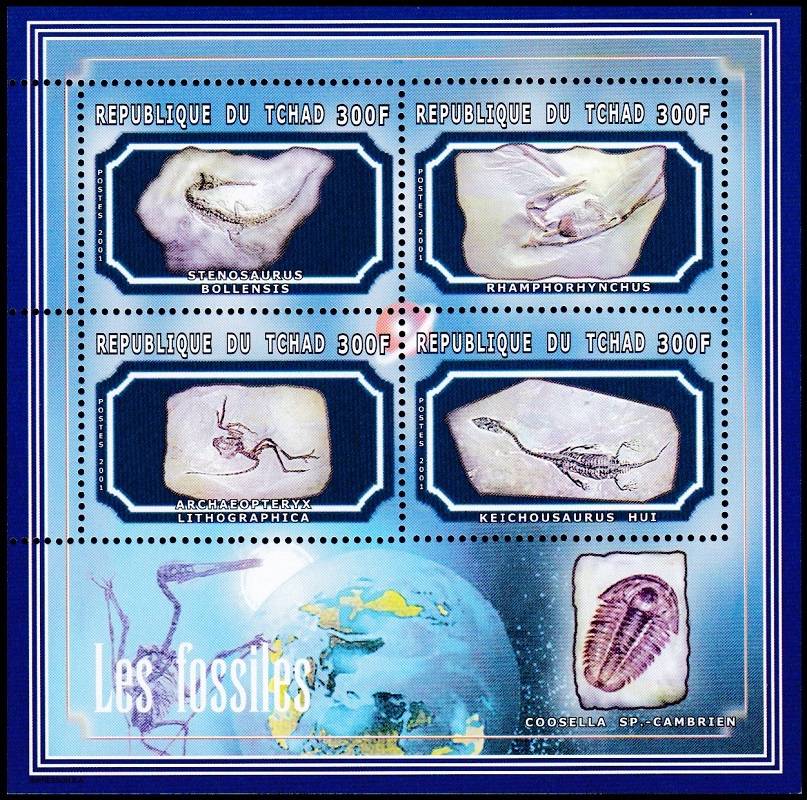 |
Send note to Staff 
|
|
|
Pillar Of The Community
Israel
3579 Posts |
|
|
The Luangwa Valley in Zambia is renowned for its rich fossil record, particularly from the Permian and Triassic periods. The valley has yielded an exceptional array of vertebrate fossils, including early therapsids (mammal-like reptiles) such as Dicynodonts and Gorgonopsians, which showcase the transition from reptilian to mammalian features. Fossils of archosaurs, precursors to dinosaurs, and diverse amphibians have also been discovered, providing insights into the ecosystems during the Permian-Triassic extinction event and subsequent recovery. These findings are critical for understanding evolutionary dynamics during one of Earth's most significant biological crises. A very attractive fossil stamps set and one of the most beautiful in my collection is the one shows Luangwa fossils, issued by Zambia on February 1, 1973: Oudenodon and Rubidgea Fossils of Oudenodon and Rubidgea from the Luangwa Valley, Zambia, highlight the diversity of Permian therapsids. Oudenodon was a herbivorous dicynodont with toothless beaks, while Rubidgea was a carnivorous gorgonopsian, known for its saber-like teeth and predatory adaptations. Their coexistence reflects a complex ecosystem of herbivores and apex predators before the Permian-Triassic extinction.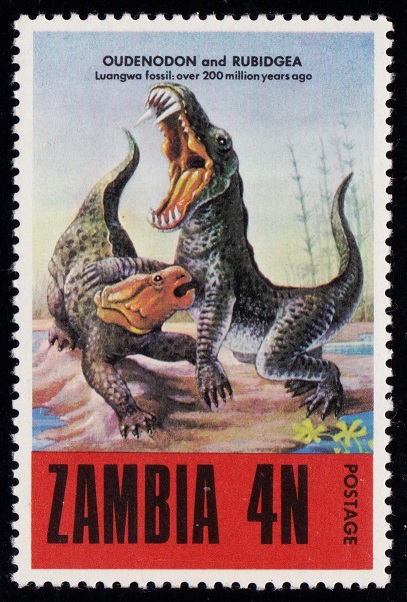 - Zambiasaurus was a dicynodont therapsid, mammal-like reptile, from the Middle Triassic period, 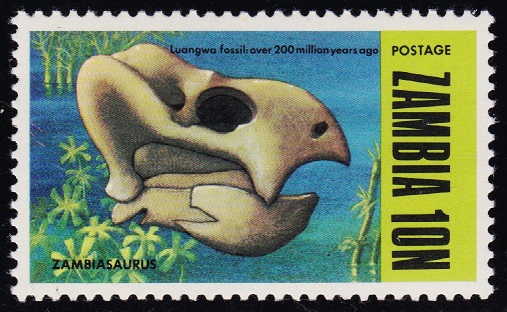 - Skull of Luangwa Drysdalli - Luangwa drysdalli was a dicynodont therapsid, a type of herbivorous, mammal-like reptile from the Late Permian period. 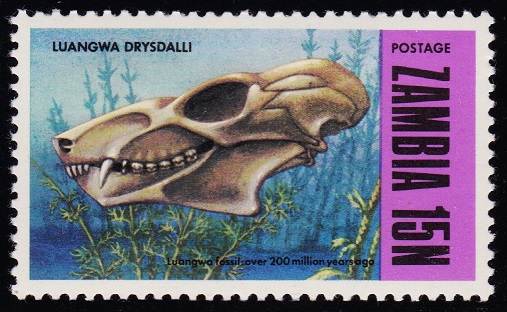 - Glossopteris fossils from the Luangwa Valley represent an extinct genus of seed ferns that thrived during the Permian period. 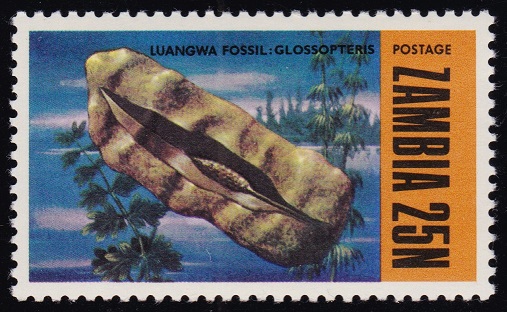 The Broken Hill Man, also known as Homo rhodesiensis or the Kabwe skull, is a hominin fossil. This fossil, dating to around 300,000–125,000 years ago, provides crucial insights into human evolution in Africa during the Middle Pleistocene and is often considered a possible ancestor or close relative of modern humans (Homo sapiens). 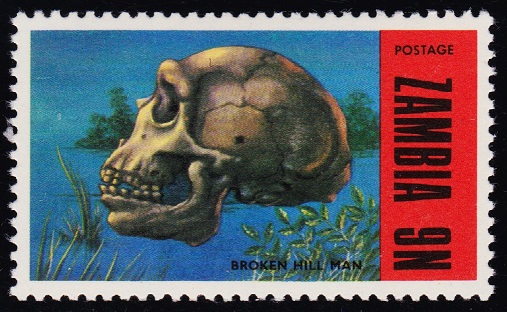 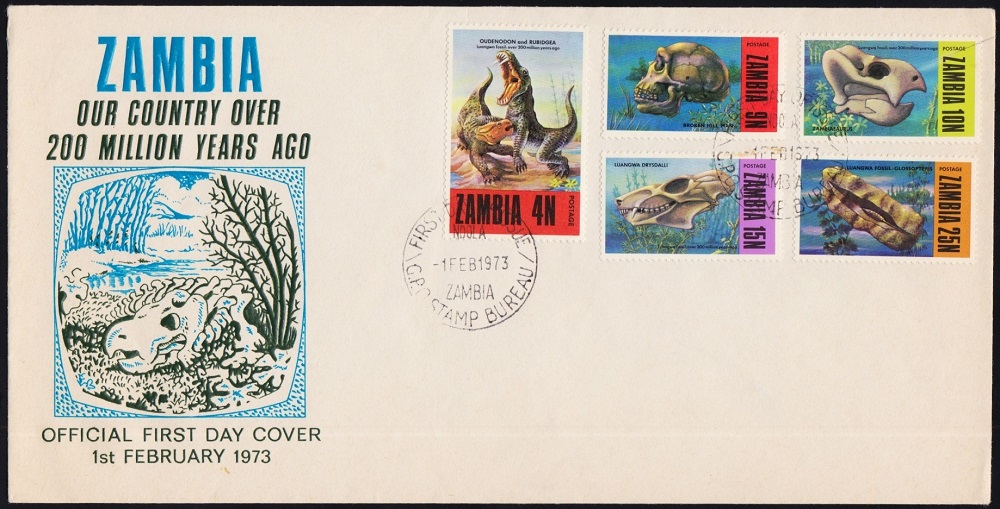 |
Send note to Staff 
|
|
|
Pillar Of The Community
Israel
3579 Posts |
|
|
Fossilized dinosaur eggs have been discovered in various parts of the world. These eggs provide significant insights into the reproductive biology, nesting behavior, and embryonic development of dinosaurs. Fossilized eggs can belong to various species of dinosaurs, including theropods (like the ancestors of birds), sauropods, and ornithopods. Some fossilized eggs even contain preserved embryos, allowing researchers to identify the species and study their development. Fossilized dinosaur eggs, I assume from China, issued by the Central African Republic on April 28, 1996 to publicize the China '96 stamp exhibition. 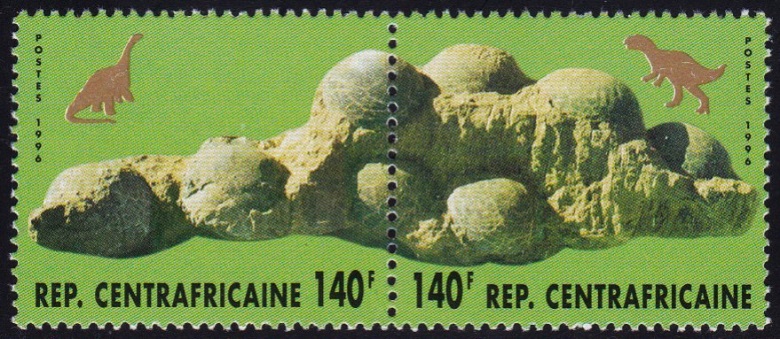 Same stamps, but different shade, were issued in SS. 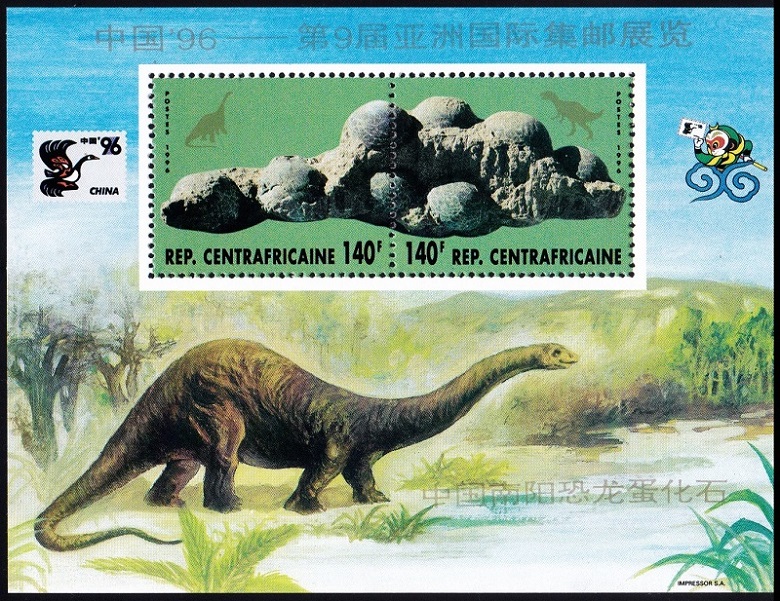 Fossilized dinosaur eggs on postmark issued in USA on October 7, 1989.  Baby dino hatching from the egg, on postmark issued in USA on October 2, 1989. I think this PM was drew by a child. 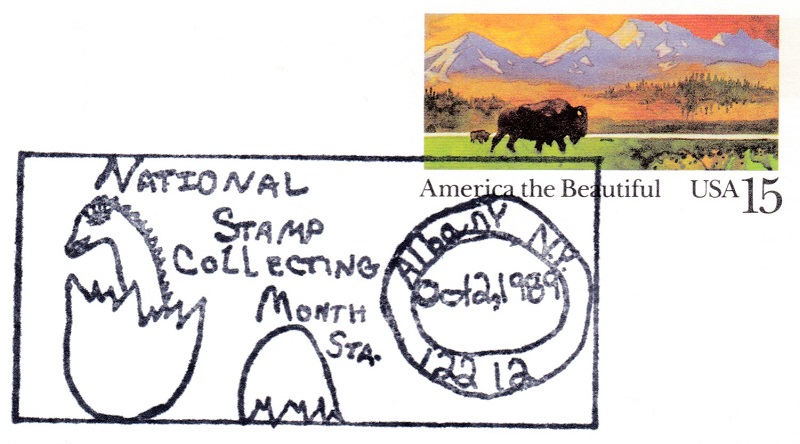 |
Send note to Staff 
|
|
|
Pillar Of The Community
Israel
3579 Posts |
|
|
The Ediacaran Period (approximately 630–542 million years ago) marks the final period of the Precambrian and precedes the Cambrian explosion of complex life. It is notable for the emergence of the first large, multicellular organisms, known as the Ediacaran biota, which include soft-bodied forms. This period saw significant environmental changes, including rising oxygen levels in the oceans, which likely supported the diversification of early life. Fossils of the the Ediacaran Period, issued by Namibia on August 8, 2008. 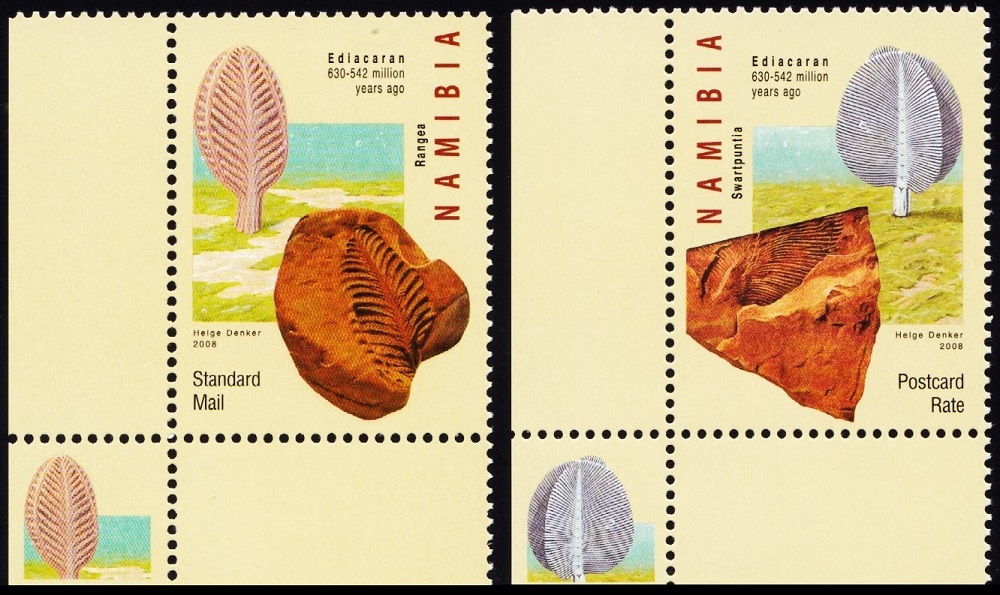 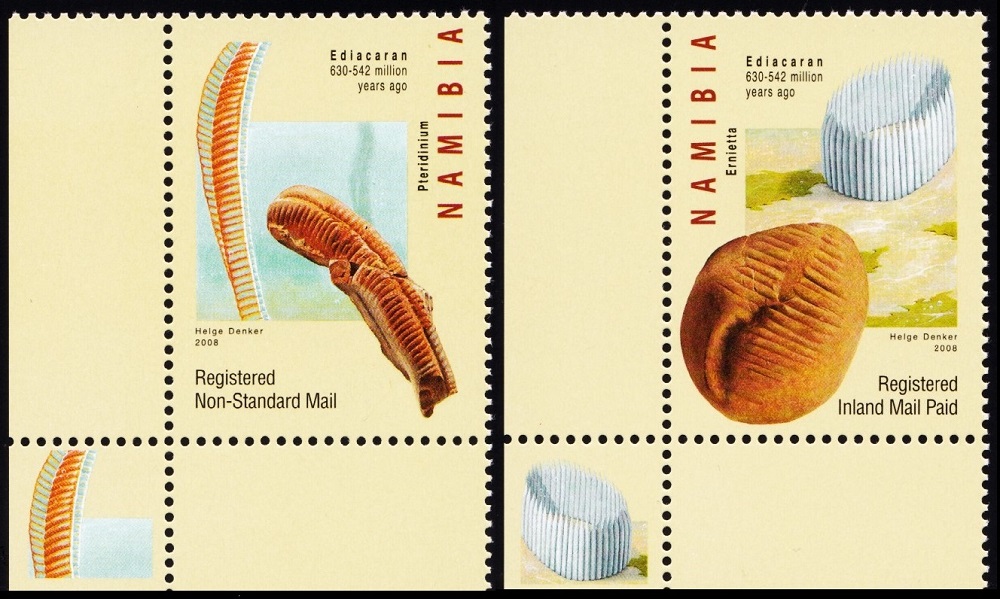 |
Send note to Staff 
|
|
 Replies: 65 / Views: 2,005 Replies: 65 / Views: 2,005 |
|
